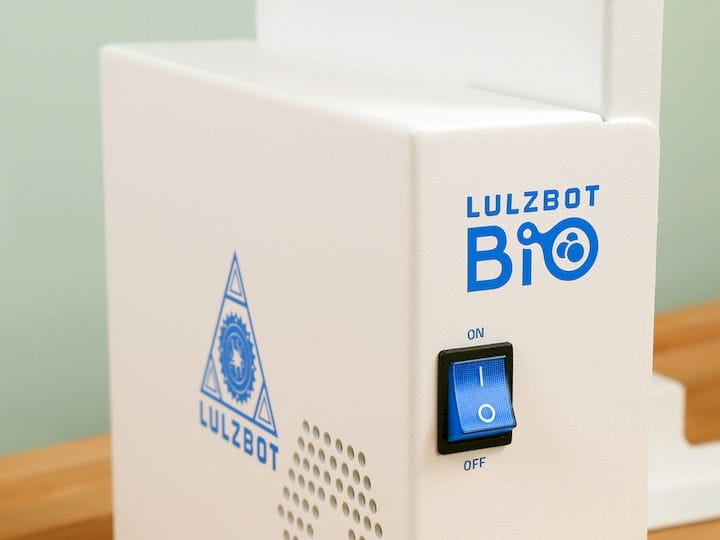![The upcoming LulzBot Bio 3D bioprinter [Source: Aleph Objects]](https://fabbaloo.com/wp-content/uploads/2020/05/image-asset_img_5eb095393fac8.jpg)
Aleph Objects announced a partnership with FluidForm to develop a 3D bioprinter.
This is a very curious move for Aleph Objects, who have been producing FFF-style 3D printers for all of their existence. But more on that later.
The partnership seems to be a way to integrate FluidForm’s bioprinting concept into a salable 3D printing package by Aleph Objects into something they call the LulzBot Bio. One way to look at it may be to say that the extrusion system is being provided by FluidForm, and the rest of the machine is by Aleph Objects, although it’s likely far more complex than that.
Here’s a video showing how the FluidForm process works:
As you can see, it’s an extrusion process using a fluid material. The biomaterial is extruded using a syringe-like mechanism into a gel body. The gel is used to hold the extrusion stationary in 3D space while the printing takes place. After printing, the gel body is simply dissolved away, leaving the bioprint.
Freeform Reversible Embedding of Suspended Hydrogels
FluidForm calls this process “Freeform Reversible Embedding of Suspended Hydrogels”, or “FRESH”. Add another 3D printing process to the ever-growing list. FluidForm developed the process in coordination with Carnegie-Mellon University, with whom Aleph Objects continues to work. Evidently this partnership has been in the works for quite some time.
One application for this bioprinting system is said to be scaffolds. These are structures on which live biological material can be deposited. The biomaterial then “grows” and fills out according to the geometry of the scaffold, which gradually dissolves away, leaving the biomaterial in the desired shape.
That process could develop, for example, custom heart valves or similar body components.
We do not have any specifications for the new bioprinter, other than the name “LulzBot Bio” and that some type of “offering” will appear later this summer. Pricing is also not yet known.
Aleph Object’s Strategy
The question of Aleph Object’s strategy in this matter is intriguing. Why would a company producing the machines that it does suddenly add an entirely different line of equipment in a completely different market?
One answer could simply be cash. LulzBot, along with many makers of similar desktop 3D printing equipment, faces extreme price pressure from low-cost Asian manufacturers. In the past these competitors have been less a problem for LulzBot as their equipment was often not as high quality, and Asian companies often struggle to market successfully in the West.
But that’s changing, and changing quickly. I am increasingly seeing powerful Asian equipment vendors at Western trade shows, and their equipment is frequently at par with or higher in quality than the Western competition.
A company like LulzBot might then consider moving towards new markets, and a very good one to consider is the medical industry, where prices for “parts” are already high. Thus the relatively expensive process of 3D printing can more easily fit into the medical ecosystem, much like it did in the aerospace market.
Although this may seem like a very strange move by current LulzBot customers, I believe it to be a strong strategic venture by Aleph Objects, and who knows, in the distant future it may be what saved the company?
Via LulzBot











FELIXprinters has released a new bioprinter, the FELIX BIOprinter, which is quite a change for the long-time 3D printer manufacturer.